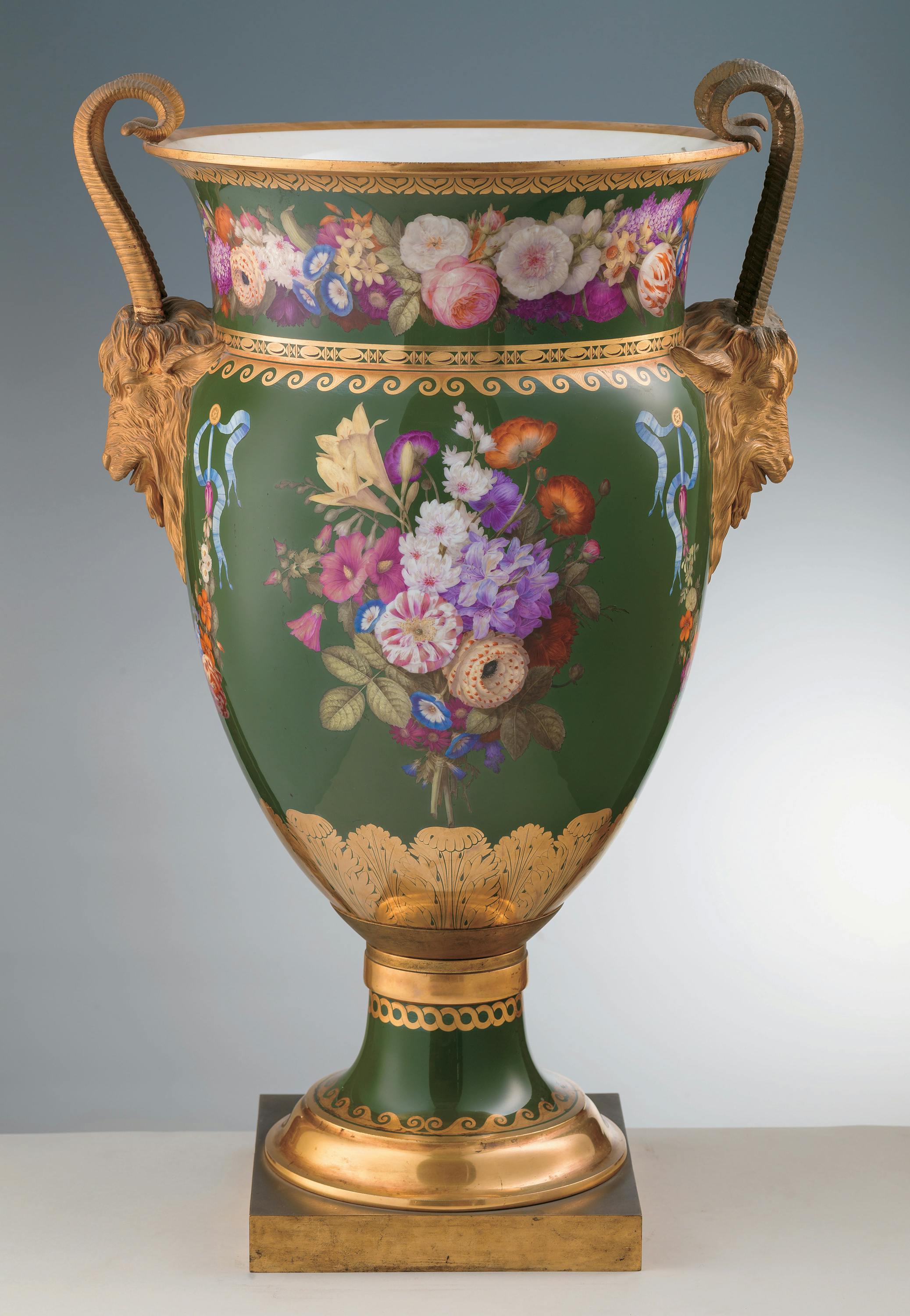Pair of Cordelier vases
Sèvres Factory
Mark Non visible
The pair of Cordelier vases is of the same type, albeit “third size”, as the one donated in 1810 by Napoleon I to Ferdinand III Habsburg Lorraine and also exhibited in the White Hall in the Palatine Gallery (Pitti Art Objects 1911 nn. 928-929). This model, present in the collections of the Sèvres Factory since the end of the 18th century, achieved great success in the 19th-century revisitation, as also confirmed by its production in three different dimensions. The chrome green background that covers the surface, together with the shades of blue, is another very common shade in the production of this period; see for example the monumental vase exhibited in the Modern Art Gallery of Pitti Palace (Pitti Art Objects 1911 n. 158), defined as “Medici” in the documents of Sèvres and also donated by Napoleon I to Ferdinand III in 1811. Our specimens are finely decorated on both sides with bouquets probably taken from botanical tables, given the perfection and variety of the composition. This hypothesis is reflected in the decorative choice of the Ginori Factory, which around 1820-1825 replicated them almost faithfully, dividing them into four plates.
The bunches of flowers are unframed paintings, with a mastery that evokes the miniature technique introduced by the Sèvres Factory at the beginning of the 19th century and developed mainly in the copying of works by important artists who were mainly active between the 16th and 17th centuries, in line with the taste of Grand Tour travellers. Their execution, together with the two garlands that enhance the bronze handles in the shape of chamois protomes and the one that develops at the mouth of the vase, have been traced back to the decorator Gilbert Drouet active in the factory from 1785 to 1825 and specialised in this genre of representations, in addition to those of birds. Furthermore, the choice of these floral compositions was similar to those proposed in 1809-1810 on a pair of vases with a lilac background he made to furnish the apartments of Maria Luisa Habsburg Lorraine, second wife of Napoleon I in the castle of Compiègne.
On our specimens the polychrome decoration is embellished with motifs executed in gold, including refined acanthus leaves placed at the junction between the body and the foot of the vase that recall the Medici Vase, the ancient marble crater of the Medici collections taken as a model from the factory.
